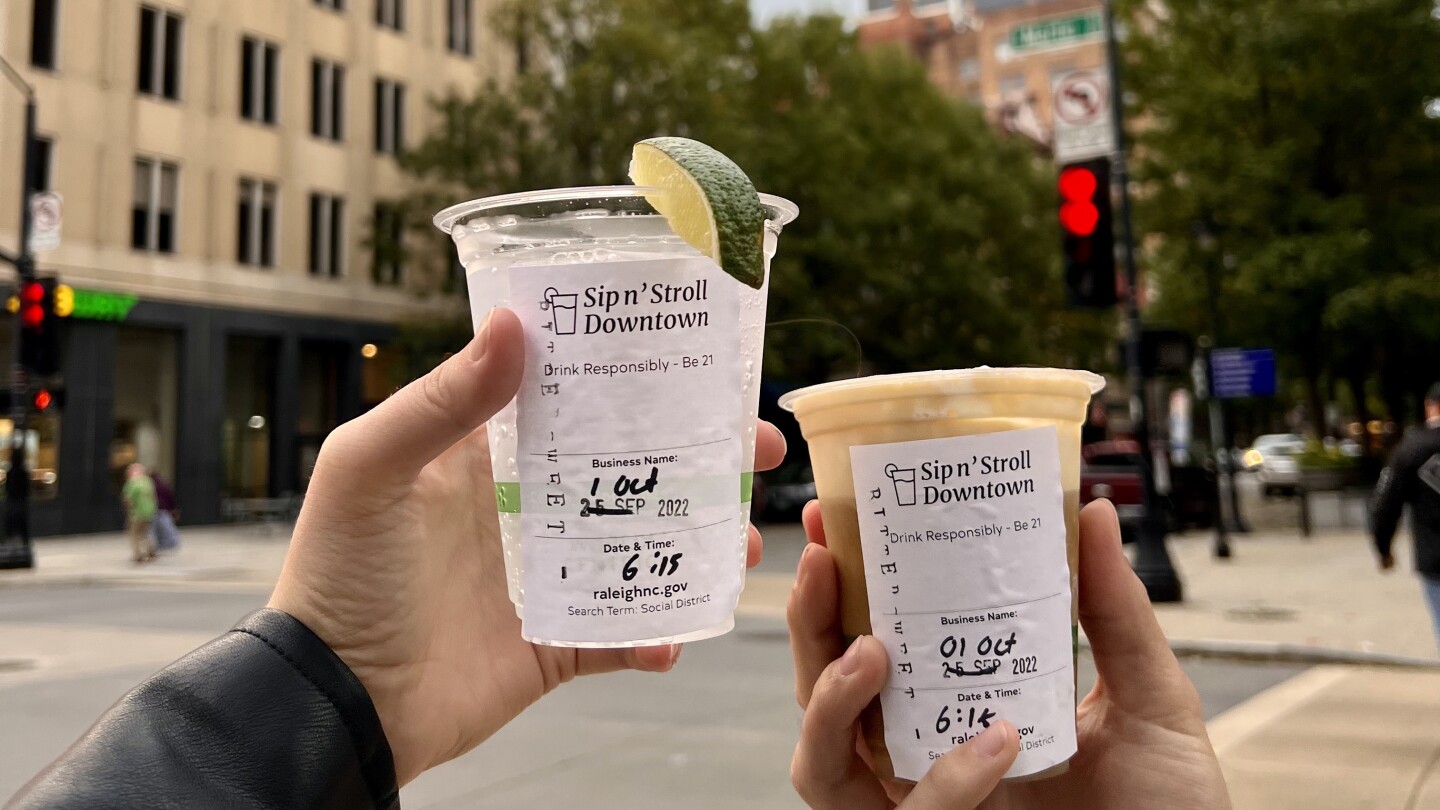Greenville residents may soon have a new way to experience their lively city if social districts become part of the local landscape. Social districts, designated areas where pedestrians can legally carry and consume alcoholic beverages in open containers while walking between establishments, are gaining momentum across the United States. Cities from Raleigh to Tampa Bay have embraced this concept as a way to boost foot traffic, increase business revenue, and create more engaging public spaces.
Social districts represent a novel approach to community gathering and economic development. While Greenville already enjoys the freedom of open containers during special events like Artisphere and Fall for Greenville, establishing permanent social districts would expand these opportunities year-round. The concept is simple: patrons purchase drinks in special branded cups from participating businesses and can then freely wander within clearly marked boundaries. This freedom to “sip and stroll” creates a more relaxed atmosphere that encourages visitors to explore multiple venues and spend more time in commercial areas.

- Imagining the transformation: What if Greenville embraced social districts? Source: https://6amcity.com/author/mmcmillen – gvltoday.6amcity.com
The growing popularity of social districts reflects changing attitudes about public space and community engagement. Cities implementing these zones report increasing economic activity and the liveliness of downtown, as noted by Raleigh officials. For Greenville, with its pedestrian-friendly downtown and thriving hospitality scene, social districts represent a natural development of the city’s community-centered growth. These districts effectively blend the casual feel of a festival with everyday life, creating spaces where residents and visitors can connect while supporting local businesses.
Implementation would require careful planning and collaboration between city officials, business owners, and residents. Clear boundaries would need to be established, with appropriate signage indicating where open containers are permitted. Enforcement protocols would ensure that the districts remain safe and enjoyable for everyone. While some concerns about public intoxication might arise, cities with existing social districts have found that proper management and clear guidelines effectively address these issues while maximizing the economic and social benefits.

- Cheers to social districts: Bringing life to streets and boosting local economies. Source: https://6amcity.com/author/mmcmillen – gvltoday.6amcity.com
Cities across America provide strong examples of successful social district implementation. In Tampa Bay, the Riverwalk allows visitors to purchase drinks in branded cups from participating establishments and enjoy them while strolling along scenic waterways. Chattanooga’s Station Street has become a lively destination where patrons freely move between restaurants, bars, and entertainment venues with drinks in hand. Even neighboring Asheville is exploring social districts that would activate during street fairs and art walks, creating a model that could work well in Greenville’s context.
Several areas in Greenville show particular promise for social district implementation. The Village of West Greenville, with its concentration of galleries, restaurants, and shops, could enhance its popular First Fridays by allowing visitors to carry beverages as they explore art exhibitions. The West End, with its mix of retail and dining options, presents another ideal location where shoppers might enjoy a beer from Gather GVL while browsing neighborhood stores. Camperdown, as a newer mixed-use development, could further distinguish itself by integrating a social district element into its design, creating a truly cohesive live-work-play environment.
Beyond enhancing visitor experience, social districts offer substantial economic benefits. Businesses within these zones typically see increased foot traffic and higher sales, as patrons tend to stay longer and visit multiple establishments. Restaurant and bar owners appreciate the expanded seating capacity that effectively extends beyond their physical walls. Retail shops benefit from increased exposure as beverage-carrying visitors browse while strolling. This economic boost can be particularly valuable for small, independent businesses that form the backbone of Greenville’s commercial character.
Successful implementation would require attention to practical considerations. Clearly defined boundaries must be established and communicated through distinctive signage and sidewalk markings. Designated cups with branding specific to the district would help with enforcement and create marketing opportunities. Collaboration between law enforcement, business owners, and city sanitation would ensure that concerns about security and cleanliness are addressed. Many cities also implement time restrictions, allowing social district activities during specific hours to balance the needs of businesses with those of nearby residents.
